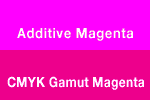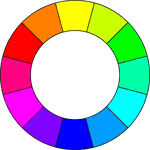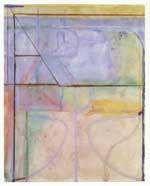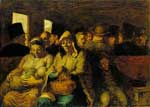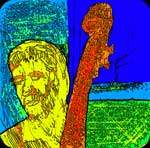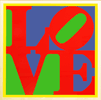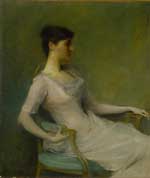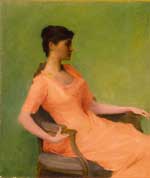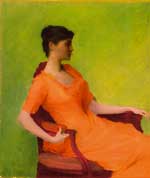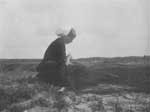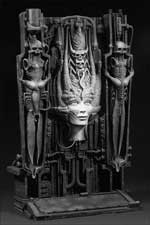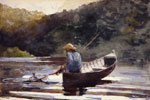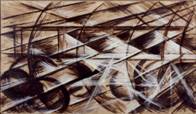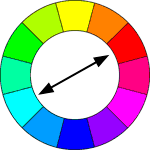Bring in sketchbooks next Tuesday, 4/11.
A color model (Or color system) is a way to describe colors based on certain characteristics such the color's Red, Green and Blue levels... or its hue, value, saturation... etc.
Hue, Value and Saturation color model
Three qualities, or properties, Hue, Value and Saturation, may be used in combination to describe any color. HUE"Hue" has been previously covered. |
|
|
|
Note:
The hue, Magenta, is a mixture of red and blue wavelengths... It is an extra-spectral color, meaning it is not within the visible spectrum as generated by a single wavelength of light.
Magenta's relationship to other hues may be shown on a color wheel.
VALUE
| Value is the relative lightness or darkness of a color. This is a middle-value gray. |  |
|
| This gray is higher in value than the middle value gray; but lower in value than white. A painting using values as light as, or lighter than middle value gray would be referred to as "High Key." |  |
Diebenkorn |
| Lower in value than the middle value gray; but higher in value than black. A painting using values as dark as, or darker than middle value gray would be "Low Key" |  |
Daumier |
| Value is the relative lightness or darkness of a color. These three colors... made from different hues, have approximately the same value. |  |
|
SATURATION
Assignment
Bring in sketchbooks next Tuesday, 4/11.
Paint a saturation/intensity/value scale as shown in the drawing below… CUT OUT and use 1” squares of Bristol Board... mount it on a larger sheet.
Sketchbook - on 3 separate pages
- Find examples of colors as pure hues and glue them into your sketch book
- Find examples of subdued colors and glue them into your sketch book
- Find examples of neutrals or nearly neutrals and glue them into your sketch book.
Examples may be photos, magazine clippings, web photos, wallpaper samples, house paint samples, etc.
Bring in sketchbooks next Tuesday, 4/11.

